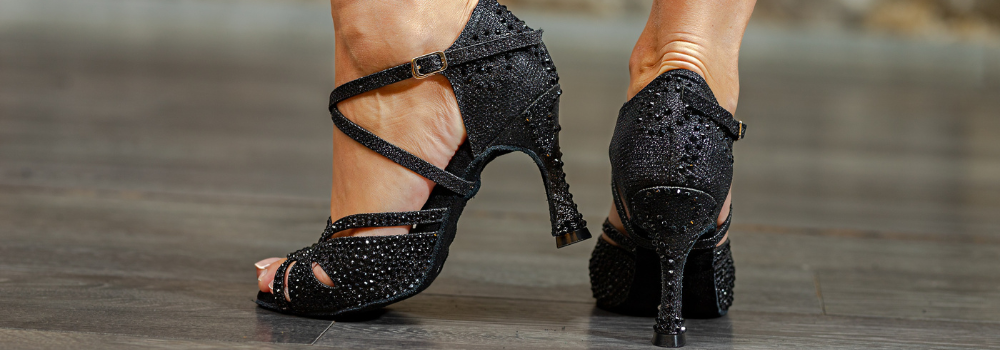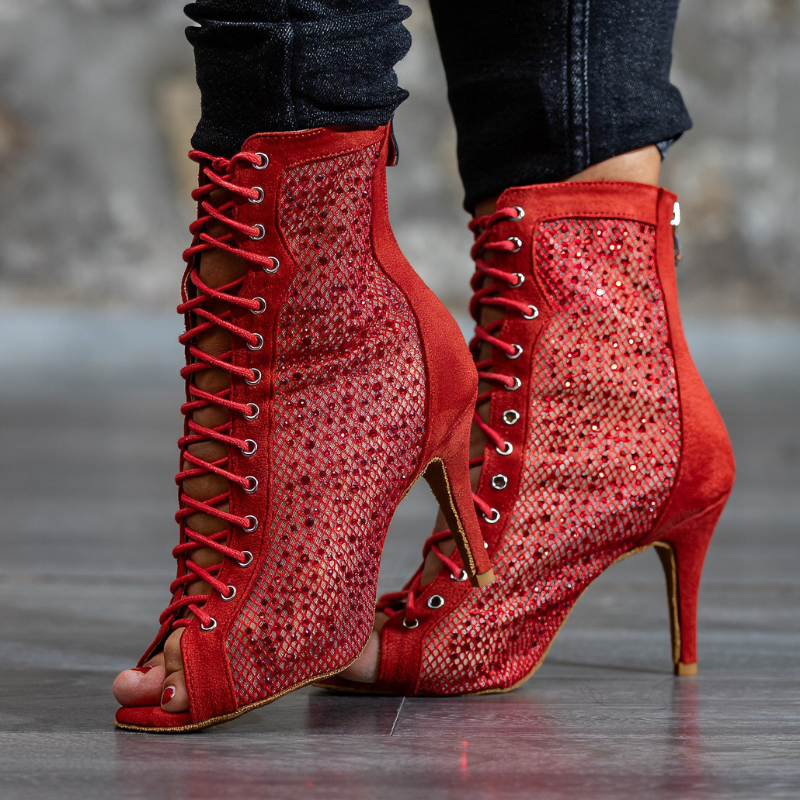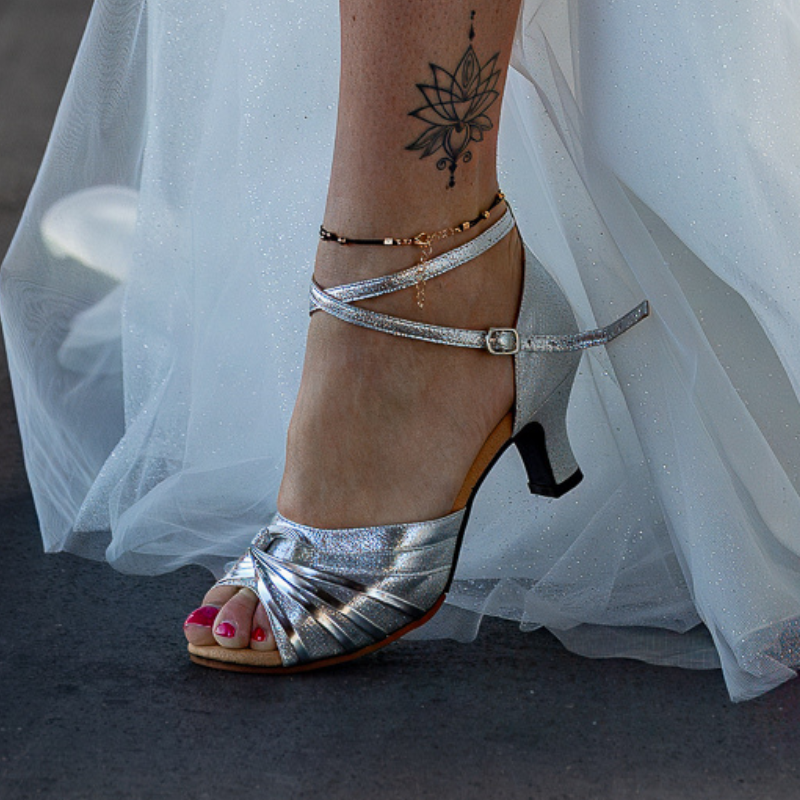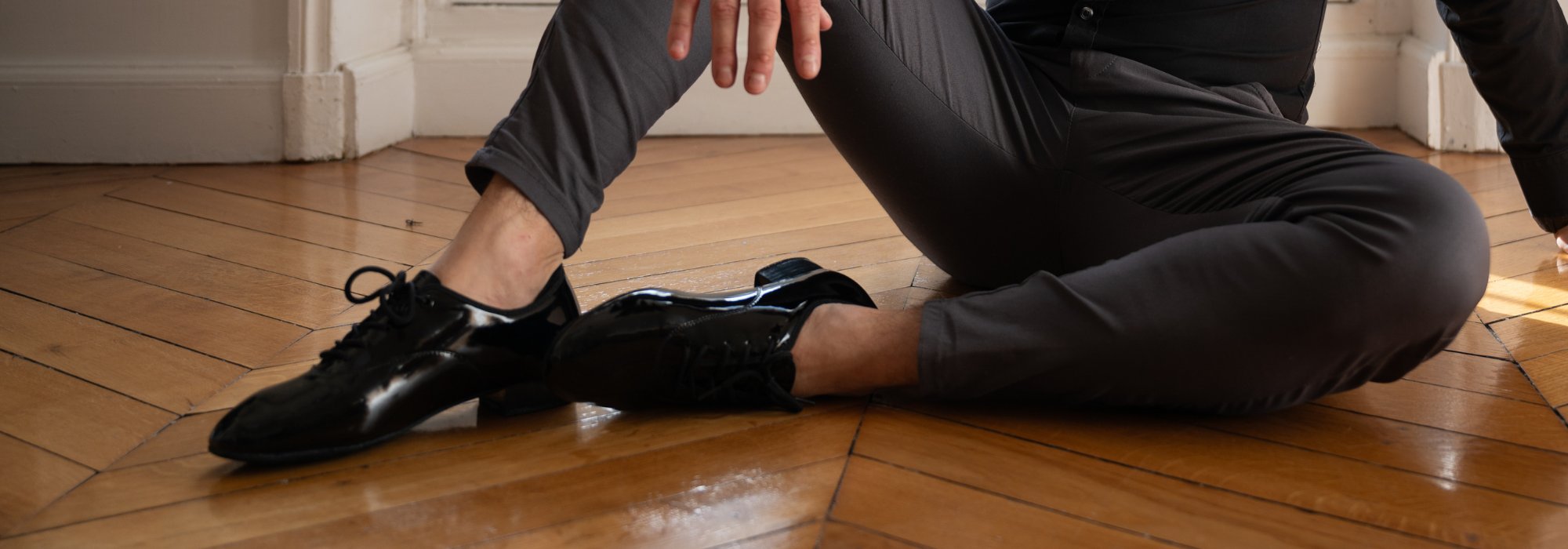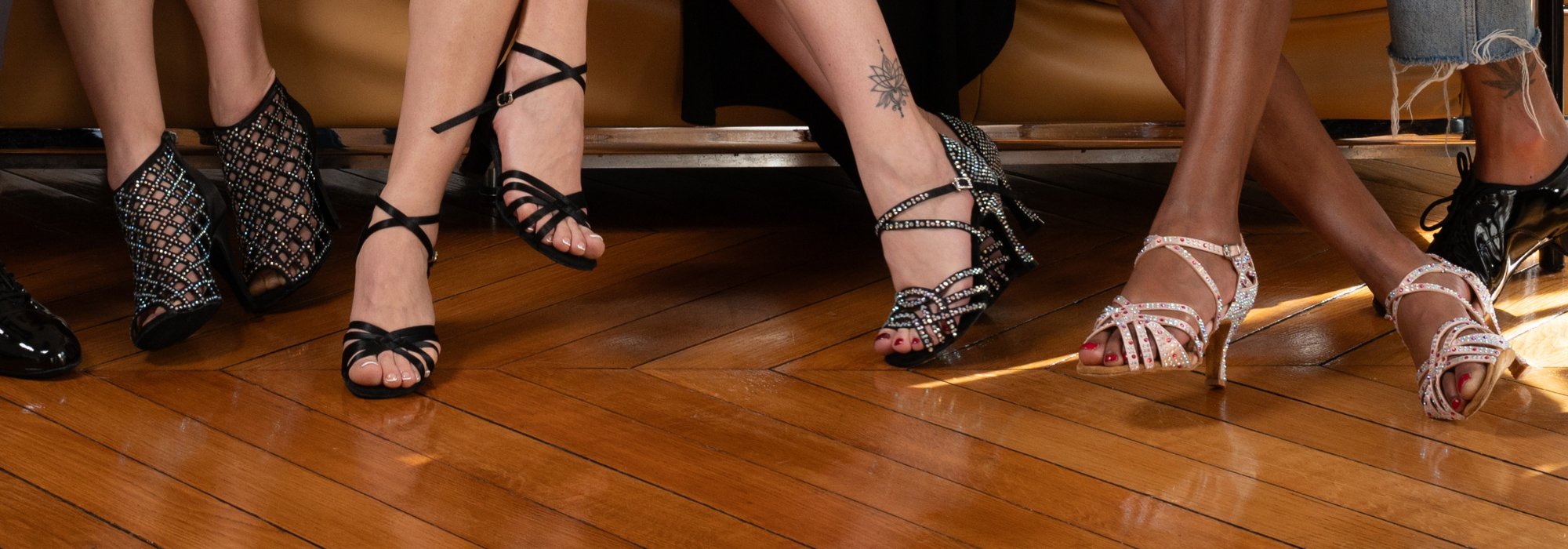New Article
How to choose your heel shoes to dance without ankle pain?
Who has never dreamed of twirling on a runway like Beyoncé or Yanis Marshall, while keeping your ankles light, safe and pain-free? However, when it comes to selecting heels to shine on the floor, many dancers sacrifice comfort on the altar of aesthetics... only to end up limping out of the studio. Heels are real dance partners: they can enhance your figure, but also slow you down if they lack stability or weigh down your ankles. How to combine glamour, safety and technicality without torturing your feet? Discover here all the secrets of an informed choice, to master your posture and technique without compromising either your comfort or your passion.
Understand the importance of good fit in heels
Comfort: the first dance of the day starts with your feet
Imagine your feet as the base of a castle: every movement, every pivot starts from there. A suitable fit for heel shoes not only preserves your ankle, but the entire postural chain. Choose a model that hugs your foot without compressing it too much or leaving any margin (goodbye blisters, hello fluidity!).
- Always test the shoe standing and moving, not just sitting.
- Prefer models that are slightly stretchy or lined with soft leather to fit the shape of your foot.
- Check the internal seams: no protruding seams should harm the skin over time.
Common mistakes to avoid
Opting for “everyday size” is a common mistake. Dance heels often have their own size chart — don’t hesitate to consult the conversion guides offered in our shop. A heel that is too unstable or an extreme arch unbalances your entire posture.
- Avoid models that “have to be done” to the detriment of your toes.
- If your heel comes off when you dance, the shoe is too big or ill-fitting.
Stability above all: a heel that carries you, not one that makes you wobble
Choosing the Right Heel Height and Shape
Dancing in heels is a subtle balancing act! To prevent your ankle from tiring, choose a height appropriate to your experience. Beginners will benefit from opting for a heel between 6 and 8 cm, wide at the base for increased stability. Are you already comfortable? You can then climb to 10 cm, with a stiletto heel for a sensual touch, provided you have enough strength and alignment in your ankle.
- Prefer “coil” or square heels to tame the basics.
- Tests stability on one leg and during demi-pointe climbs.
Material and sole: the invisible ally of stability
A thin but dense sole (turned leather or microfiber for example) allows you to feel the ground while providing grip. The outsole must allow it to pivot without “catching”, thus preserving overall stability.
- Avoid shoes with smooth “city” soles that slip too much.
- Choose a lightly padded insole at the arch of the foot.
Technique and posture: shoes at the service of expression
Maintain your ankle properly: the art of good support
For each weight transfer to be precise as a clave beat, the heel shoe must provide real lateral and rear support. An ankle strap or a covering vamp prevents any instability.
- Favors models with crossed straps or sturdy buckles.
- Test the hold in flexion and extension of the foot before purchasing.
Training your technique: shoes as an accomplice to progress
The more a shoe corresponds to your level and your body type, the more your technique is refined. A shoe that is too hard, too high or poorly balanced interferes with the precision of support, prematurely fatigues the ankle, and complicates learning spins and straight posture.
- Start with low heels while your technique consolidates.
- Gradually move on to taller and thinner models to gain stage expression.
Maintaining safety and comfort with every dance
Taking care of your feet every day
Dancing in heels is like taming wings: you have to respect your limits and listen to the warning signals. Don't hesitate to warm up your ankles specifically before each session, and alternate with low shoes to rest your muscles and tendons.
- Moisturize and massage your feet regularly after training.
- Renew your shoes as soon as you feel the insole sagging or the support giving way.
Pro tips to avoid injuries
Your ankle must remain queen of the track, never in pain. Use, if necessary, gel pads under the sole or at the heel, especially during dance marathons or intensive rehearsals. Remember, safety is the first secret to longevity in dance.
- Wear ultra-thin socks or invisible toe guards to avoid friction and blisters.
- Have your heels and soles checked before every important event.
Choosing a suitable brand or model: the SalsaNueva requirement Shop
Do not neglect quality in the world of heel shoes
Investing in a high-end pair means betting on safety, comfort and durability. At SalsaNueva Shop, all our models are selected from recognized brands, designed and tested by dancers for passionate dancers like you.
- Consult the Reviews and detailed descriptions of each model.
- Don’t hesitate to come and try your shoes during a session at the SalsaNueva school if you are in Paris.
Personalization and monitoring: so that your shoe becomes your ally
Some brands offer customization options (materials, colors, width, etc.), which allows you to create a truly tailor-made tool for your dance and safety. Our SalsaNueva advisors are available to guide you on the choice best suited to your technique and posture.
- Ask us your questions: each foot is unique and deserves personalized attention.
Maintain your heel shoes to preserve stability and comfort
Tips for pampering your favorite pairs
Regular maintenance prolongs the life and quality of your heel shoes: brush the turned leather sole, air the models after each use, and store them in a cover to avoid any deformation.
- Keep a soft brush specific to dance soles in your bag.
- Always let shoes dry away from a direct heat source.
Express diagnosis: when should you change your shoes?
Feeling imbalance, heel sagging, loss of comfort or grip? It is then time to renew your equipment, to continue dancing with joy... and without pain!
- Regularly inspect points of wear (seams, soles, straps).
- Never keep a shoe “just in case” if it threatens your safety.
Combine look and performance: enhance your figure with confidence
Style never excludes comfort
Daring to use rhinestones, vibrant colors or satin finishes gives you the right to shine – provided that the design respects the ergonomics of the foot and the safety of the ankle. A good model always balances trend and technical efficiency.
- Always test the shoe for at least five minutes in dancing conditions, not just in front of the mirror.
- Never sacrifice suitable width or support for the sake of aesthetics.
Look inspirations for dancing without compromise
A classic black pump, a pastel sandal with multiple straps, a heel decorated with sequins... No matter your world, each heel shoe can reveal your personality while guaranteeing stability and comfort for tireless laps! Find our selections in the category women's dance shoes.
- Dare to mix colors and materials to enhance your stage outfits or your training sessions.
FAQ - Frequently asked questions
What heel height should I choose to start dancing in heels?
To start, a height of 6 to 8 cm is ideal. You benefit from good elevation without sacrificing stability, which protects your ankles even during long sessions.
Are heel shoes suitable for all foot shapes?
Most models offer different widths and structures. Don’t hesitate to choose a customizable model or test several shapes to find the one that best suits your body shape.
How to avoid ankle pain when dancing in heels?
Choose shoes that fit well, with a stable heel, a supportive strap and a suitable sole. Also remember to warm up your ankles and strengthen your posture with targeted exercises.
How long can I keep my heels before replacing them?
As soon as you feel a loss of support, grip or an imbalance, it is time to change them. On average, a pair can last from 6 months to a year depending on how often you dance.
Can I wear my dance heels outdoors?
It is better to keep your heel shoes indoors: their specific sole may be damaged on asphalt or surfaces not intended for this purpose, which reduces their lifespan.
Is there a difference between shoes for classes and for stage?
It is not obligatory, but many dancers prefer a “training” pair (more comfortable, less fragile) and a more aesthetic or upscale “performance” pair for the stage.
How do I maintain my heels?
Brush the soles after each use, store your shoes in a cover and let them air dry. Regularly check straps, seams and soles to ensure their durability and your safety.
Discover our heel shoe models available on our SalsaNueva online store Shop, designed for demanding dancers.

